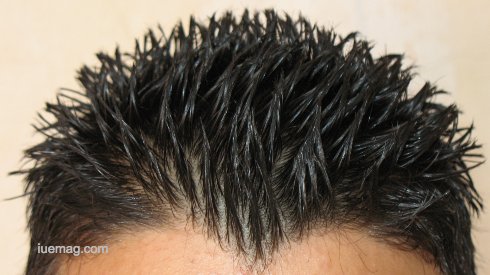

All you need to know about Hair Transplant
A hair transplant is technically a procedure in which hair follicles are placed or grafted to areas where the hair follicles have died off and the grafts are taken from already existing hair follicles. This can be done in two ways:
1. FUE - Follicular unit extraction
2. FUT - Follicular Unit Transplantation
 Follicular Unit Transplantation is also called the strip technique in which the strip of hair is removed by the trained professional and then transplanted at the recipient or deficient area in simpler terms.
Follicular Unit Transplantation is also called the strip technique in which the strip of hair is removed by the trained professional and then transplanted at the recipient or deficient area in simpler terms.
Follicular Unit Extraction is most commonly used to transplant hair. In this technique, the hair follicles are individually removed and transplanted to the required area.
People who have
- Genetic Loss of hair
- Loss of hair in patches
- Loss of hair due to Trauma
- Hairless scars in hair bearing areas
- Absence of beard and moustache since birth
Individuals having systemic disorders like liver dysfunction, Uncontrolled diabetes etc. Your doctor is the best person to judge who can and who shouldn’t undergo a hair transplant.
Certain aspects need to be looked upon before considering a hair restoration surgery. They are:
- Routine blood test
- Allergy test
- Liver function tests
- Donor hair area needs to be examined
- Alcohol, smoking or tobacco has to be discontinued one week prior to the procedure and until three weeks after.
- Exercise should be discontinued until three weeks after the procedure.
To conclude, I would like to say that Hair Restoration Surgery is very safe and doable. The doctors trained to do such transplant surgery have undergone extensive training to attain their skills. So go ahead, a head full of hair is beautiful, needed for its role and certainly makes you look younger. Don’t ignore the receding hairline; visit your doctor sooner than later.
Stay beautiful! Cheers!
1. FUE - Follicular unit extraction
2. FUT - Follicular Unit Transplantation
The difference between FUE and FUT?
 Follicular Unit Transplantation is also called the strip technique in which the strip of hair is removed by the trained professional and then transplanted at the recipient or deficient area in simpler terms.
Follicular Unit Transplantation is also called the strip technique in which the strip of hair is removed by the trained professional and then transplanted at the recipient or deficient area in simpler terms.Follicular Unit Extraction is most commonly used to transplant hair. In this technique, the hair follicles are individually removed and transplanted to the required area.
Who can go in for a hair transplant?
People who have
- Genetic Loss of hair
- Loss of hair in patches
- Loss of hair due to Trauma
- Hairless scars in hair bearing areas
- Absence of beard and moustache since birth
Who should not go for a hair transplant?
Individuals having systemic disorders like liver dysfunction, Uncontrolled diabetes etc. Your doctor is the best person to judge who can and who shouldn’t undergo a hair transplant.
Things to consider before the procedure:
Certain aspects need to be looked upon before considering a hair restoration surgery. They are:
- Routine blood test
- Allergy test
- Liver function tests
- Donor hair area needs to be examined
- Alcohol, smoking or tobacco has to be discontinued one week prior to the procedure and until three weeks after.
- Exercise should be discontinued until three weeks after the procedure.
Complications:
Like any medical procedure, even hair restorative surgery comes with its own set of complications although very rare and minor if done right. Few of which are- Bleeding from the site, swelling on the scalp, swelling around the eyelids, poor hair growth, poor results, infection, folliculitis which is the inflammation of the follicules, cysts, scars may also be formed in rare cases.To conclude, I would like to say that Hair Restoration Surgery is very safe and doable. The doctors trained to do such transplant surgery have undergone extensive training to attain their skills. So go ahead, a head full of hair is beautiful, needed for its role and certainly makes you look younger. Don’t ignore the receding hairline; visit your doctor sooner than later.
Stay beautiful! Cheers!
Copyrights © 2025 Inspiration Unlimited - iU - Online Global Positivity Media
Any facts, figures or references stated here are made by the author & don't reflect the endorsement of iU at all times unless otherwise drafted by official staff at iU. A part [small/large] could be AI generated content at times and it's inevitable today. If you have a feedback particularly with regards to that, feel free to let us know. This article was first published here on 19th July 2017.
Feeling Stuck / Muddled / Uninspired? OR Simply Need a Positive Brainstorming Chat
Connect With OUR Super Inspiring Positivity Chat Now! Give it a TRY!
You Won't Regret it!

All chats are end-to-end encrypted by WhatsApp and won't be shared anywhere [won't be stored either].


